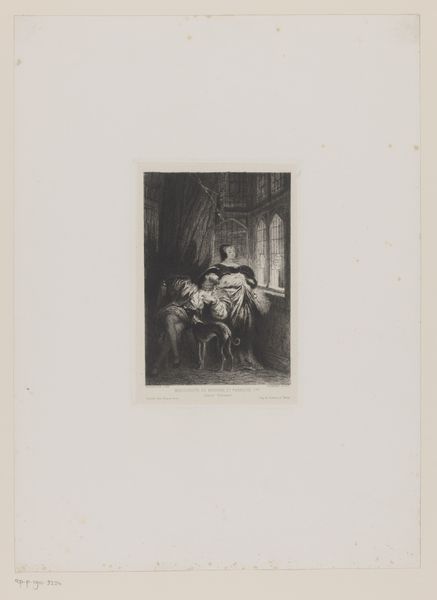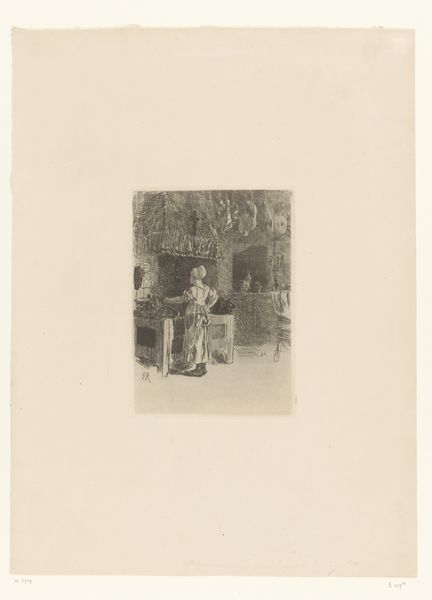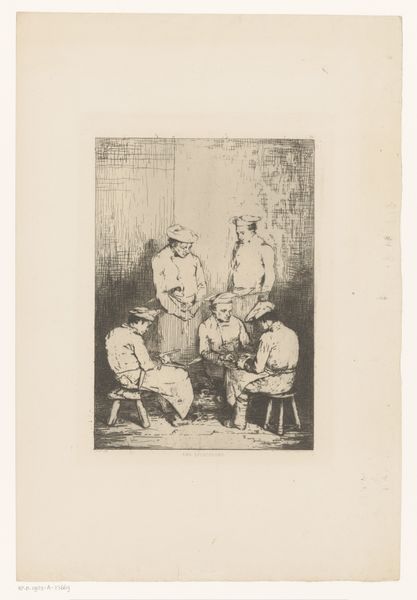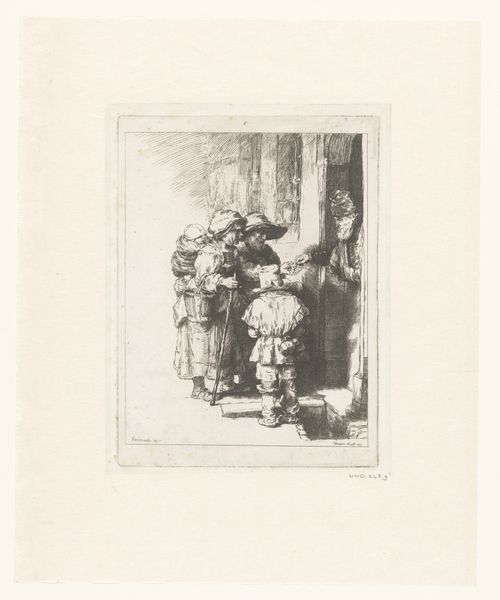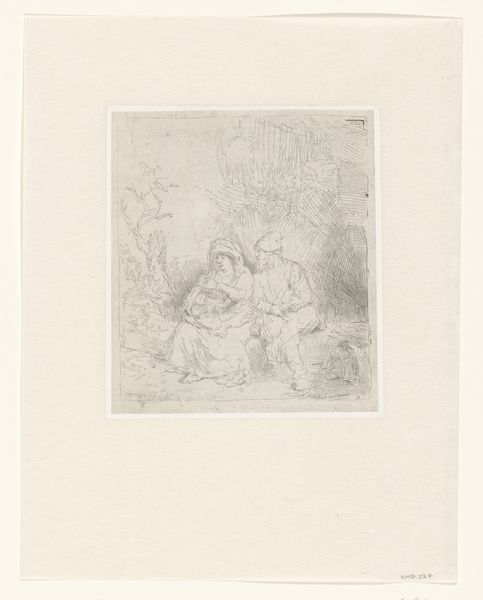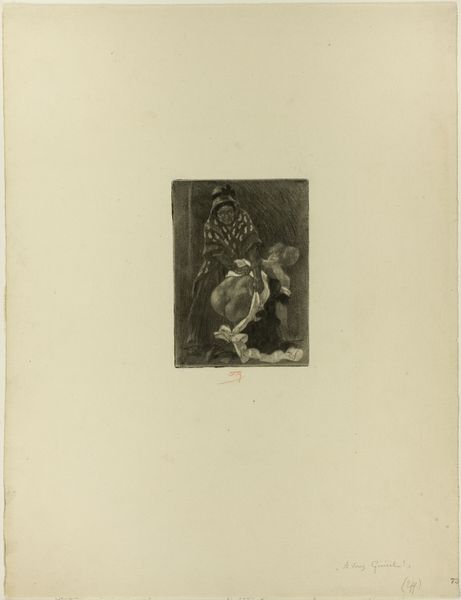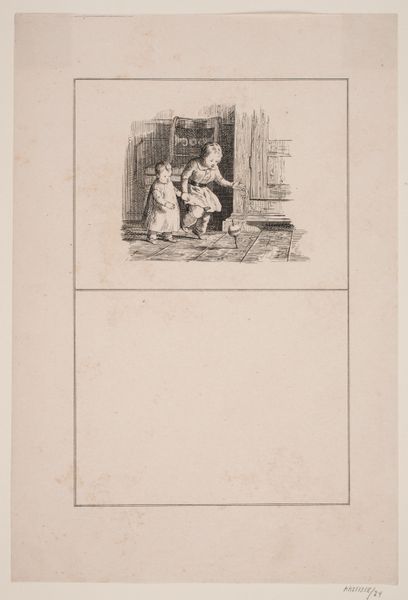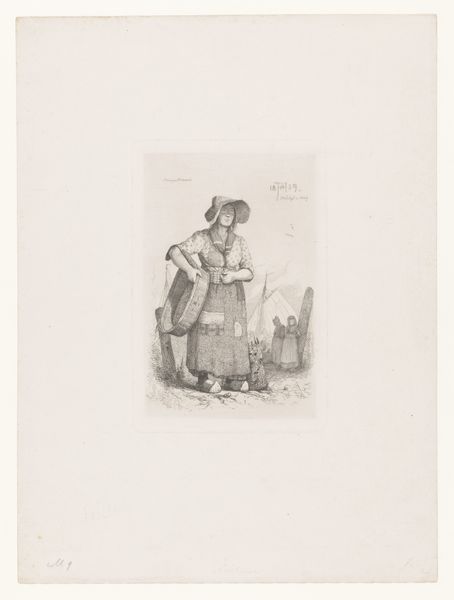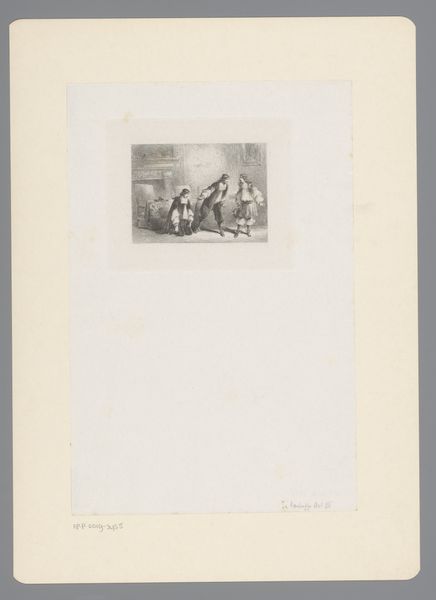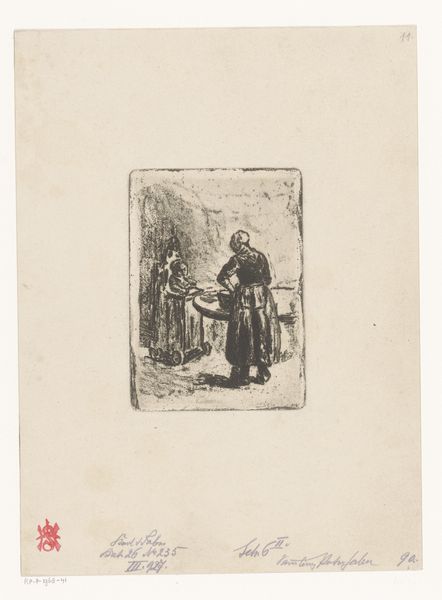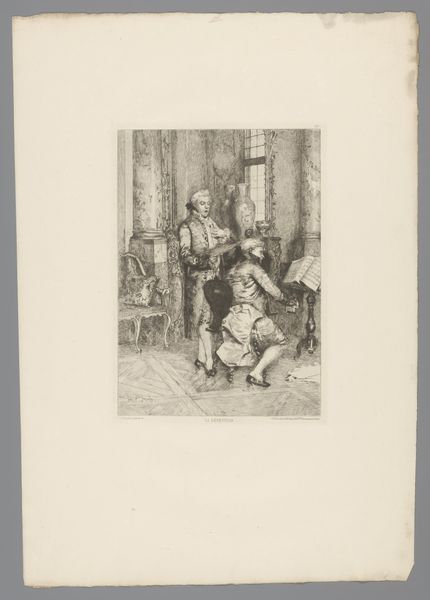
drawing, paper, pen
#
portrait
#
drawing
#
paper
#
pen
#
genre-painting
#
academic-art
Dimensions: height 279 mm, width 198 mm
Copyright: Rijks Museum: Open Domain
Curator: This drawing by Juan Antonio González, dating to 1880, is entitled "Salon with Four Seated Women and Men." What’s your initial impression, Editor? Editor: Restrained elegance, I’d say. The composition appears subdued; I immediately note the contrast between the fineness of the line work and the presumed affluence of the depicted subject, the figures of leisure. The pen on paper offers a fragile medium to capture this scene of upper-class domesticity. Curator: Indeed. Let's consider the composition. The arrangement of figures creates a visual rhythm. The lines of sight converge, almost forming a narrative ellipse—though the vagueness in execution keeps that interpretation elusive. Semiotics might frame that reading as a kind of symbolic closure without actualized form. Editor: For me, this speaks to the rise of industrial society and new technologies in manufacturing, affording the emerging middle class access to materials and skills, historically enjoyed only by aristocrats, as it speaks to any formal element. Pen and paper as tools, materials indicative of broader societal shifts. What social conditions would give rise to leisure and the means to portray such a life? Curator: That’s astute, connecting it back to industrialization. It leads to how academic art served its patrons, often presenting idealizations—almost like a constructed performance that upheld a certain worldview. Consider the texture conveyed with delicate, deliberate pen strokes. Note the gradations creating depth; and the careful distribution of light that enhances dimensionality in this salon scene. Editor: And where are such scenes staged and viewed? Consider the economic forces at play in producing the paper, inks, and then framing this "snapshot of high society” for potential consumption as commodity itself. And I am left wondering, who is the artist here, to those of higher classes? Did González benefit from this work, and how? Curator: An intriguing perspective that ties this artwork to systems of power, no doubt; but ultimately this salon drawing operates on an aesthetic level. Editor: Yet it's impossible to disentangle these social fabrics—it exists because of materials available, created, utilized, acquired, commodified, within defined material circumstances. That context shapes both creation and how we look at it today. Curator: Perhaps we find the strength of this art lies at this point of intersectionality—the push and pull of form and content in that context. Editor: Precisely, seeing art always entails examining not only the aesthetic results, but also the means and materials by which we produce its context.
Comments
No comments
Be the first to comment and join the conversation on the ultimate creative platform.


